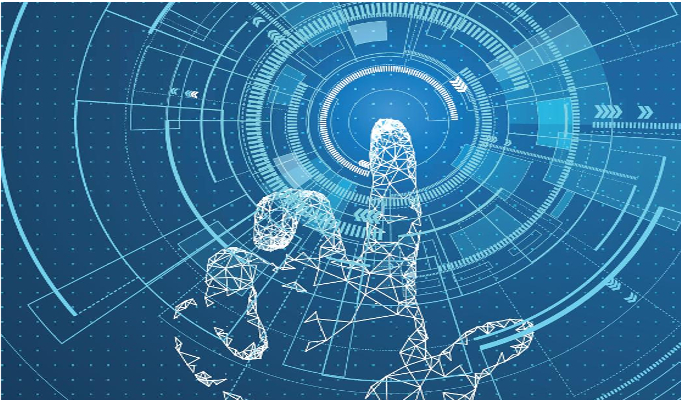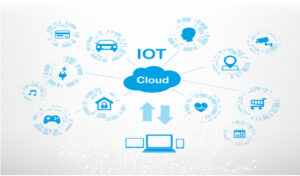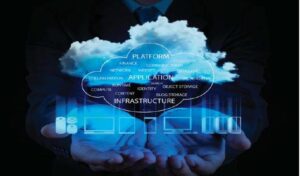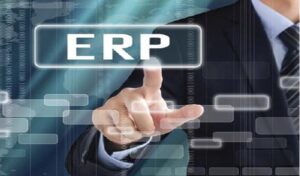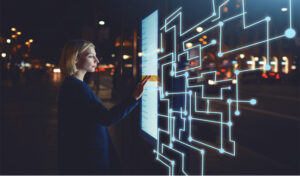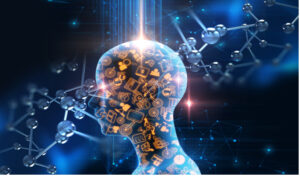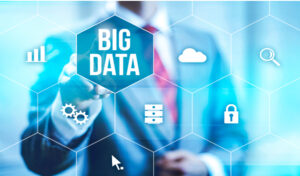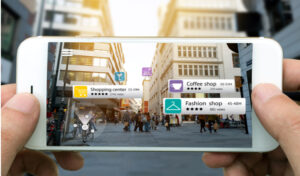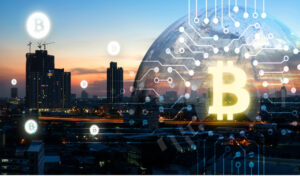The technology collective is breaking new ground and transforming every aspect of the retail environment. The alchemy of data is here to rule and empower companies to explore unmapped territories. From warehouses to e-wallets, the next big wave sweeping the world of retail rides on the exponential infusion of breakthrough technology in all facets of human life.
The shakers and movers in the world of hot-off -the-press technologies this year have been vast and varied. From IoT and cognitive computing to Omnichannel and Artificial Intelligence, the disruptors are here for good.
1IOT
The simplest way to understand Internet of Things is that if a device has a sensor then it is connected with every other device that has a sensor. This is the heart of converging technologies. It is the gigantic network of multi-platform physical as well as embedded systems. It integrates smartphones, vehicles, real-time analytics, wireless networks, production plants, housing, wearable devices, machine learning, and many other individual units. Smart cities have been planned with a robust IoT blueprint.
2THE CLOUD
Who knew that the soft cotton candy image of a drifting cloud would mean a new world to the human race in the 21st century? Cloud computing is a shared data resource that holds and provides web-based calculations and cybernetics with the help of virtualization software. Cloud collaborations promise retailers benefits in terms of data tracking, product development and maintenance, daily operations, inter-departmental communications and much more.
3ERP
The Enterprise Resource Planning (ERP) software puts together your core business requirements as one unit. There are various licensing and delivery models that can now be procured to suit the exact requirement of your company either on premises or via third parties, hybrids, or cloud. The cloud-based applications are broadly categorised as:
Software-as-a-Service (SaaS) are applications that are simple and offer shared web-based services like Dropbox, which are provided directly to the consumer.
Platform-as-a-Service (PaaS) are tailor-made to provide tools to carry on development or management of apps. For ex. Google App Engine or Heroku.
Infrastructure-as-a-Service (IaaS) are cloud based computing facilities that enable assembly of frameworks from operating system upwards, like the Microsoft Azure or Amazon Web Services.
Robot-as-a-Service (RaaS) is a model that improves the levels of customer service with higher productivity and cost optimisation. It integrates robots and devices via cloud computing.
4MOBILE TECHNOLOGIES AND OMNICHANNEL PLATFORMS
A mobile phone is no longer a luxury. It’s a necessity. A smartphone has ceased to be just a talking device. It has a small digital kingdom of its own with Internet, GPS, camera, gaming, app stores, social media portals, payment gateways and other aids. In the complex and challenging scenario where every consumer is experiencing the brand through various channels, it is important for companies to remain available, relevant, and consistent at all touchpoints.
Confirming this, Sr. VP-IT at Hypercity Retail India Ltd., Yakeen Gazi says, “We at Hypercity are evaluating a completely new road map from ERP to Omnichannel solutions for our organization.”
Whether you are looking at e-commerce options on your computer or window-shopping at the mall, you are not left untouched by the 360-degree marketing campaigns that surround you anywhere and everywhere. Th e targeted email in your inbox is as much a part of the strategy as are the pop up ads on your social media account or the front page of your morning newspaper. Active management of multiple channels is a must for brands to drives eff ective sales.
5ARTIFICIAL INTELLIGENCE AND MACHINE LEARNING
Artificial Intelligence is not something we will see only in sci-fi movies. It has become a part of our lives in more ways than we may like to believe. The line between machine and man is blurring with every passing day. A computer can mimic human intelligence by processing information and providing problem solving, decision-making outcomes. Here, logic and reasoning are programmed as close to human thinking as possible. It helps people in making faster and more precise choices.
AI is used in e-commerce platforms, chatbot services, social media apps, defence projects, and others. Similarly machine learning uses pattern recognition to predict data based on algorithms.
India has a business ecosystem that fosters innovation and research. Indian retail is going through a transition and a paradigm shift as the brick-and-mortar mindset is warming up to digital realities. Organisations are looking forward to leveraging this data science driven AI market in terms of forecasting product demands, making product recommendations, contextual promotional offers, inventory optimisation, and understanding the customer better.
6BIG DATA
It is a data set up that manages and processes enormous amounts of labyrinthine data beyond the scope of conventional application software. This data is collected from various sources that leave a digital footprint. From a retail perspective – quickly identifying customer insights and needs becomes paramount. This requires simplifying and automating operations to drive efficiency across the retail ecosystem.
7CAMERA AS A SEARCH BOX AND NEW AGE BATTERIES/h3>
Every phone has not one but two cameras. These cameras will soon become the new search tool. Using this, physical retailers can neutralize the advantage that their pure play online competitors have by delivering multi-media content about their products when customers just point their mobile camera at it.
8AR AND VR
Augmented Reality and Virtual Reality have come as a breath of fresh air to the retail market that is besieged with the pressure of providing the consumer with new shopping experiences every time. Smart make-up rooms equipped with touchscreen digital make-up simulators and smart fi tting rooms wherein you are served the garment you need with the help of iPad apps, make buying a fun and breezy affair. Samsung Gear VR headset takes tech enthusiasts on a trip they will never forget. The Virtual Reality sets not only create a simulated environment around you but also provide other tactile sensations to give you an absolute life-like experience.
9BLOCKCHAIN AND PROXIMITY PAYMENTS
Blockchain is the new age way ofmaintaining records in a secured environment with the help of distributed database. Bajaj Electricals Ltd. has eliminated the manual steps involved in the company’s bill discounting process with the use of blockchain/ hyperledger and the entire transaction has become paperless1.
Online and contactless payments have made a spectacular entry into the Indian retail sector. Post the Government’s demonetization drive of November 2016, India has seen a surge in the use of debit/credit cards and electronic payments using QR codes. The recently launched BharatQR, developed by National Payments Corporation of India, MasterCard, and Visa, will make sure that the merchants display only one QR code. It will make the payment facilities as simple and seamless as possible.
10CRM SOFTWARE AND IN STORE CONSUMER EXPERIENCE
Every single person who clicks on your website or walks into your store has the potential to be a patron of your brand for life. Companies are going all out and using every communication channel to bring these individuals into the inner circle and retaining them as loyal consumers.
Customer Relationship Management has come a long way from birthday discounts and feedback surveys. It has borrowed the power of analytics and the elegance of hospitality to come up with evolved software that caters to the sublime requirements of the customers. Marketing strategies tow the line of mapped consumer behaviour to give them the best possible incentives and experiences. Add to that the in-store services that seal the brand-consumer bond and you have a happy customer there.
The customer preferences are changing at a fast pace and companies are gearing up to match that speed. This means highly visible transitions not just at the consumer experience stage but also in the entire supply chain including warehouses, inventory control, deliveries, data security, and others.



